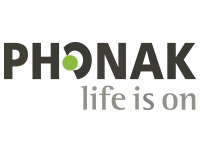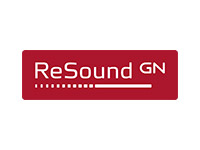
- Dec 8, 2022
The Stigma of Wearing Hearing Aids
The historical and often hysterical stigma attached to deafness and hearing loss may work as a deterrent that puts people off getting their hearing checked. However, attitudes are changing as digital technologies decrease the size and improve the look and effectiveness of modern hearing aids.
Dealing with Hearing Loss
Hearing loss occurs in one of two areas: a conductive hearing loss, which is due to a mechanical problem within the outer or inner ear known as CHL, or sensorineural hearing loss (SNHL), which has to do with the tiny nerve cells in the ear experiencing injury, disease or malfunction.
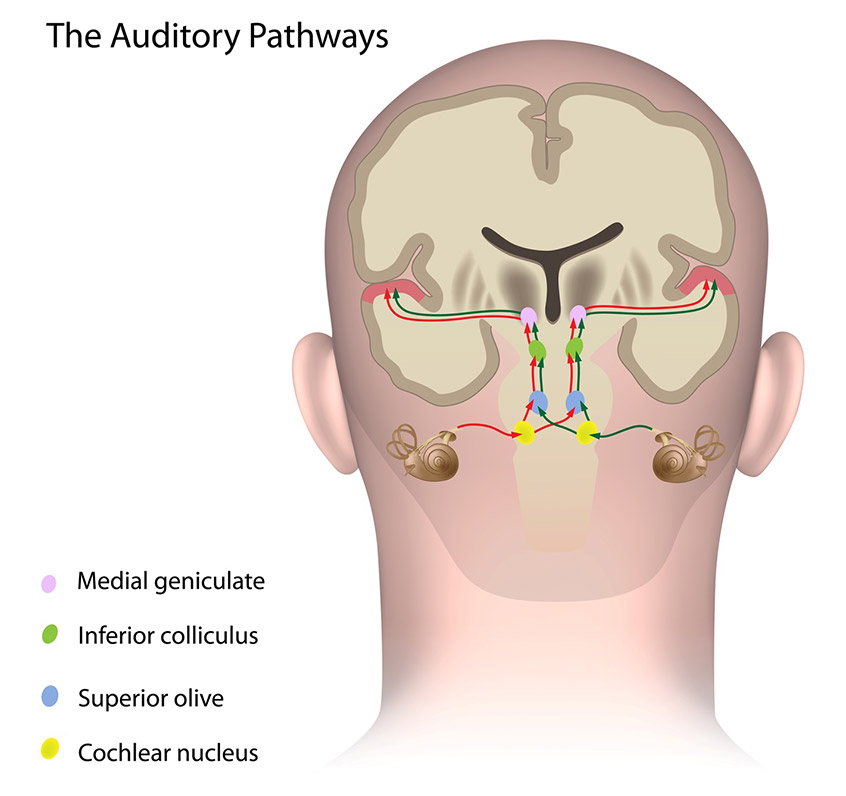
Sudden Hearing Loss
Sudden sensorineural (inner ear) hearing loss (SSHL), commonly known as sudden deafness, is an unexplained, rapid loss of hearing either all at once or over a few days.
Sometimes, people with SSHL put off seeing a doctor because they think their hearing loss is due to allergies, a sinus infection, earwax plugging the ear canal, or other common conditions.
Sudden hearing loss in one ear is rare, but when it happens it should be considered a medical emergency and attended to by a hearing medical expert immediately.
Sudden hearing loss can strike at any age, but it is most common in people who have reached their fifties.
If a sudden sensorineural hearing loss is diagnosed and treated within 24-72 hours of onset, the odds of all or some of the hearing returning are best. Strong steroids are employed, however, only around 30% of recipients report restoration or partial restoration of their hearing following this medical intervention.
Although the hearing loss seems to strike suddenly—as when a patient experiences a sudden pop and hearing is gone—in actuality, as patients look back, some recall fluctuating ear symptoms: tinnitus (noises in the ear), transient hearing loss, or dizziness for a week or two before the SSNHL really hits. Earache is not a common symptom of sudden hearing loss.
Gradual Hearing Loss
While gradual hearing loss in both ears may seem insignificant now - something you can deal with by simply turning the TV louder or asking friends to repeat themselves – its impacts are far greater than first thought.
Noise causes sound waves that make our ear drums vibrate. These vibrations are received by hair cells in the inner ear, which flatten according to the frequency and loudness of the sound and stimulate nerves that pass messages to the brain.
Very loud sounds make the hair cells collapse and flatten temporarily, resulting in temporary deafness. This is referred to as a temporary threshold shift and may last hours or longer depending on the degree of noise exposure.
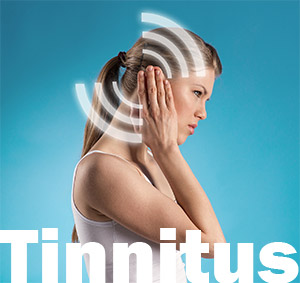 This temporary hearing loss may also be accompanied by a ringing sensation called tinnitus. If this severe noise exposure is repeated over many years, the hair cells in the inner ear become permanently damaged resulting in permanent hearing loss.
This temporary hearing loss may also be accompanied by a ringing sensation called tinnitus. If this severe noise exposure is repeated over many years, the hair cells in the inner ear become permanently damaged resulting in permanent hearing loss.
Noise-induced hearing loss occurs gradually over a long period of time and unfortunately, hearing loss is permanent and usually in both ears. Historically, noise-induced hearing loss is often due to unsafe industrial practices on construction sites or in factories and the music industry.
The most common type of hearing loss is a high frequency hearing loss. When someone is speaking to you, low-pitched vowels can be made out, but high-pitched consonants such as "ss" and "th" are missing. This makes speech sound muffled and hard to understand.
The first sign of noise-induced hearing loss is often indicated by difficulty in hearing high-pitched sounds, such as consonants (e.g. 't', 'd', 's') and the voices of women and children. When more than one person is speaking or there is a background noise, the problem becomes worse.
The Effects of Hearing Loss
- Hearing loss can have a negative impact on the ability to learn, socialize and enjoy life.
- Untreated patients are more likely to miss important information in meetings and phone calls, and make mistakes at work.
- Hearing problems can lead to avoidance or withdrawal from social situations, social rejection and loneliness.
- Friends often avoid talking to people with hearing loss because of the difficulty communicating.
- People with uncorrected hearing impairment earn less than people who hear normally.
Studies have also shown that the effects of hearing loss are cumulative. Just as muscles grow weak from lack of use, the brain loses its ability to process sounds and recognize speech without regular auditory stimulation (Auditory Deprivation). By the time you finally acknowledge that your hearing loss is real, you may have already lost the full appreciation of sounds and the music you once enjoyed.
Everyone has different reasons for putting off seeking help for hearing loss, from price issues and vanity concerns to preconceived and often outdated ideas of how hearing aids perform and how they look.
Today's hearing aids - like all high-tech devices - have come a long way in terms of looks and performance. And independent research shows that hearing aid usage has a positive effect on:
- Earning power
- Communication in relationships
- Intimacy and warmth in family relationships
- Ease in communication
- Emotional stability
- Sense of control over life events
- Perception of mental functioning
- Physical health

Everybody's Hearing is Unique
A clinician determines the requirement for a hearing aid and will help select a device that best compensates for your specific hearing loss and suits your lifestyle.
Everybody's hearing is unique, and a particular hearing device that is appropriate for one person's hearing loss and lifestyle may not be appropriate for another person.
A hearing test determines the extent of hearing loss in each ear. When both ears are impaired, studies have shown that two hearing aids improve comprehension of speech in the majority of listening environments, particularly in the presence of background noise. It also ensures that both ears stay active to reduce hearing deterioration and enhance the ability to localise a sound source. Generally, the benefits of using two hearing aids outweigh the additional costs.
The First Step to Combat Hearing Loss
The first step is making an appointment to be examined by an audiologist, who will identify the extent and type of your hearing problem.
Audiologists are health-care professionals who evaluate, diagnose, treat, and manage hearing loss, tinnitus, and balance disorders in newborn, children, and adults. An audiologist is a clinician who has completed an undergraduate university degree and a two-year master's degree in audiology.
A full diagnostic hearing assessment is easy, painless and non-invasive. The assessment is conducted by a skilled clinician and takes about 30 minutes.
A hearing assessment includes an ear examination and specialised testing to evaluate hearing sensitivity and response to speech. If hearing loss is detected the audiologist will guide you through your options.
A hearing assessment should be done in a sound insulated room. Your audiologist will ask you questions and examine your ears and then check your ears by playing tones through earplugs or a headset.
Your audiologist will explain the hearing assessment results to you and chat about possible solutions, like whether or not hearing devices are needed.
Hearing Aids and Digital Technology
Digital technology has revolutionised the way hearing devices process sound, providing superior listening comfort, speech clarity, and user control. Most digital hearing devices are programmable to individual requirements. Generally speaking, digital hearing devices are the most sophisticated amplifying devices currently available.
The latest devices have background noise cancellation software and Wi-Fi and Bluetooth technologies that can connect the wearer to the TV, iPhone or Android devices for streaming and calls. Check the features of the latest Phonak Paradise Hearing Aid.
All hearing devices use batteries. Hearing device owners are able to change batteries in most models and some hearing devices function on rechargeable batteries.
There are four types of digital hearing aids to provide different hearing solutions - Behind-the-ear (BTE), Receiver-in-the-ear (RITE, RIC), Invisible-in-the-canal styles (IIC), Canal styles (CIC, ITC, ITE)
Should hearing aids be required, the audiologist will help select the best device for effectiveness, look, size, affordability and lifestyle.
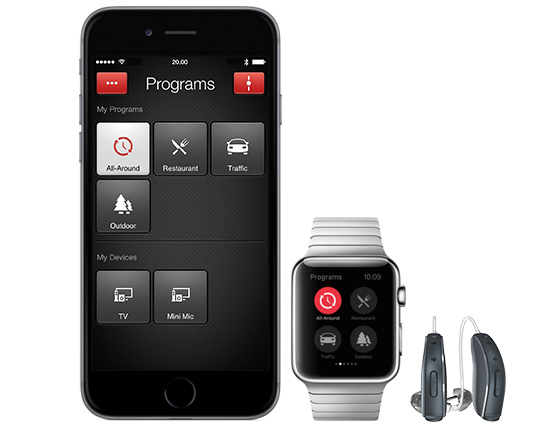
The audiologist may take an impression of your ear to capture an exact duplicate of its contours for the best fit, and will order the selected hearing aids. Delivery normally takes one to two weeks. Your audiologist then fits your hearing devices and teaches you how to use them.
Getting the best from your hearing devices takes time and practice as your brain acclimatises to hearing more. Your audiologist monitors your progress and fine-tunes the hearing devices for optimum performance.
Once it's up and running, your new hearing devices should last at least five years.
Overcoming the Stigma of Wearing Hearing Aids
An estimated 10 per cent of the world's population is to some degree, deaf. That is, 700 million individuals, ranging from those who have mild hearing loss and may or may not rely on hearing aids or lip-reading, to those who communicate using sign language and are part of a diverse Deaf Culture.
When diagnosed recently with sudden permanent hearing loss, Robert investigated his options:
'I did some research online and was relieved to find that the latest technologies included small in the canal devices that were almost completely hidden in the outer-ear canal and shaped from a mould of the wearer's ear canal to fit firmly and comfortably into the ear. These small hidden devices cannot house all the software and Wi-Fi technology of a pair of ‘behind the ear' devices but owing to my SSHL hearing loss in only one ear, I required only one hearing aid.
I have discovered that no hearing aid can ever replace the quality of sound that a fully functioning human inner ear (cochlear) can provide in conjunction with the human brain; however, our quality of life can be enhanced through the use of hearing aid devices.'
So thankfully attitudes towards hearing aids and the historic stigma associated with using them is changing as the new digital technologies allow for the wearing of discreet, affordable and highly effective devices. After all, one in every ten of us suffers some form of hearing loss.
Researched, Compiled, Composed and Written by Dr Steven Gration. May 2019 - for SEO Services Gold Coast
Originally Posted 15 May 2019
Tags
Other Articles
16/04/2025 The ear is the gateway to your life »
11/08/2024 Phonak Audeo Sphere Infinio Hearing Aids »
04/06/2024 The Science of Signal-to-Noise Ratio »
05/12/2023 Understanding Body Language In Meetings »
21/11/2023 Slim Hearing Aids »
18/06/2023 Noise and non-hearing health »
12/06/2023 Using Conversation Visual Cues »
03/01/2023 A beginner's guide to Bluetooth »
16/08/2022 How to Become a Better Listener »
13/05/2022 Negativity Bias »
22/04/2022 Tinnitus who has it and why? »
14/10/2021 Lost or Damaged Hearing Aids »
20/10/2020 Deep Listening »
08/10/2020 Over-the-Counter hearing aids »
08/09/2020 Hear Better than Anyone in the Room »
12/08/2020 Sound Wavelength and Loudness »
03/03/2020 Localisation - identifying where sound comes from »
10/02/2020 Sudden Deafness »
17/12/2019 Hearing Better in Meetings »
09/12/2019 Can meditation improve hearing? »
18/11/2019 Over 50s »
30/10/2019 Wireless Hearing Aids »
07/10/2019 Cleaning and Maintaining Hearing Aids »
09/04/2019 What is the process for buying a hearing aid? »
06/02/2019 One Hearing Aid or Two? »
31/01/2019 Hearing Aid Cost Breakthrough 2019 »
29/08/2017 Hearing Aid Future is Here »
09/06/2017 ABC Checkout Warns on Hearing Aid Purchases »
13/04/2017 Listening better in a noisy world »
21/02/2017 Hearing augmentation devices - IQBuds »
08/12/2016 Childrens Hearing Linked to Social Disadvantage »
24/10/2016 Hearing with Less Effort »
25/01/2016 Seven Thousand Ways to Listen »
01/10/2015 Hearing Loss and Dementia »
06/03/2015 Myth: Hearing Aids do not work »
03/12/2014 ABC Background Briefing Hearing Aids »
20/11/2014 Buying a hearing aid for your parents »
17/01/2014 Is Bluetooth making costly Hearing Aids redundant? »
13/01/2014 Research Online and Save »
08/10/2013 Phonak Q10 Hearing Aid Review »
13/05/2013 Is anyone listening to you »
12/04/2013 Hearing Aid Repairs »
05/04/2013 Will I benefit from a hearing aid? »
18/03/2013 Compare Hearing Aids »
13/03/2013 Audiologists are now mobile »
08/03/2013 Hearing and your work prospects »
18/12/2012 Hearing and your baby »
13/12/2012 Occlusion effect when wearing hearing aids »
24/10/2012 Hearing Aid Brands in Australia »
18/10/2012 ReSound Verso »
03/10/2012 Waterproof Hearing Aids »
28/05/2012 Music to your ears »
19/02/2012 Donate hearing aids that are no longer needed »
31/01/2012 An Invisible Hearing Aid »
26/11/2011 Who to see for sudden hearing loss »
03/11/2011 Restore your hearing or use aids »
13/09/2011 Not wearing your hearing aids »
29/08/2011 Audiologists Career Path »
26/08/2011 Bluetooth Hearing Aids »
Hearing Aid Referral
Get the best price and care from our network of professionals
FREE/no obligation
- Great Care
- Major Brands
Hearing Aid Brands in Australia
